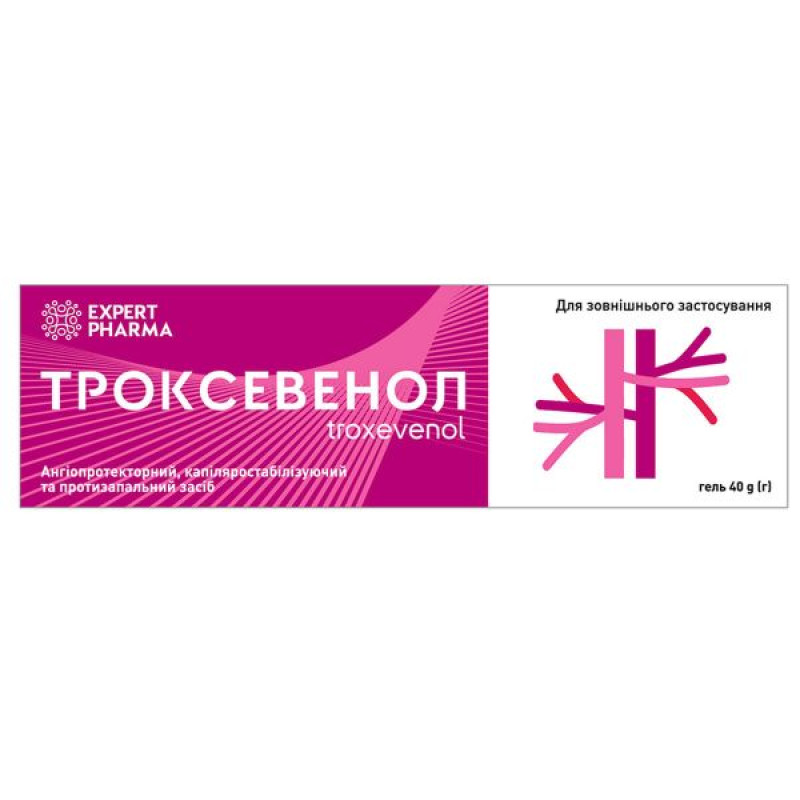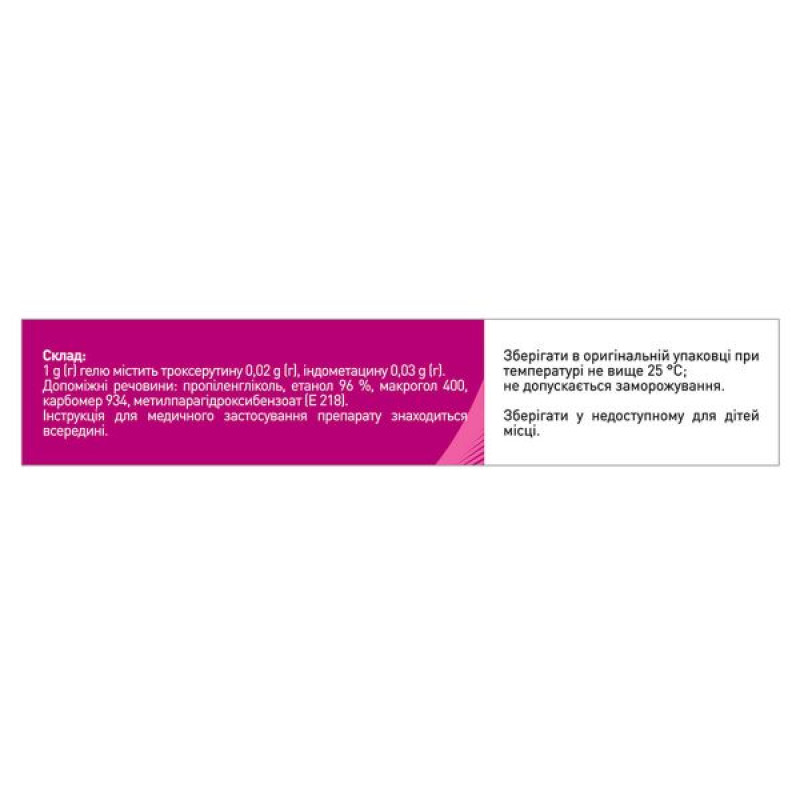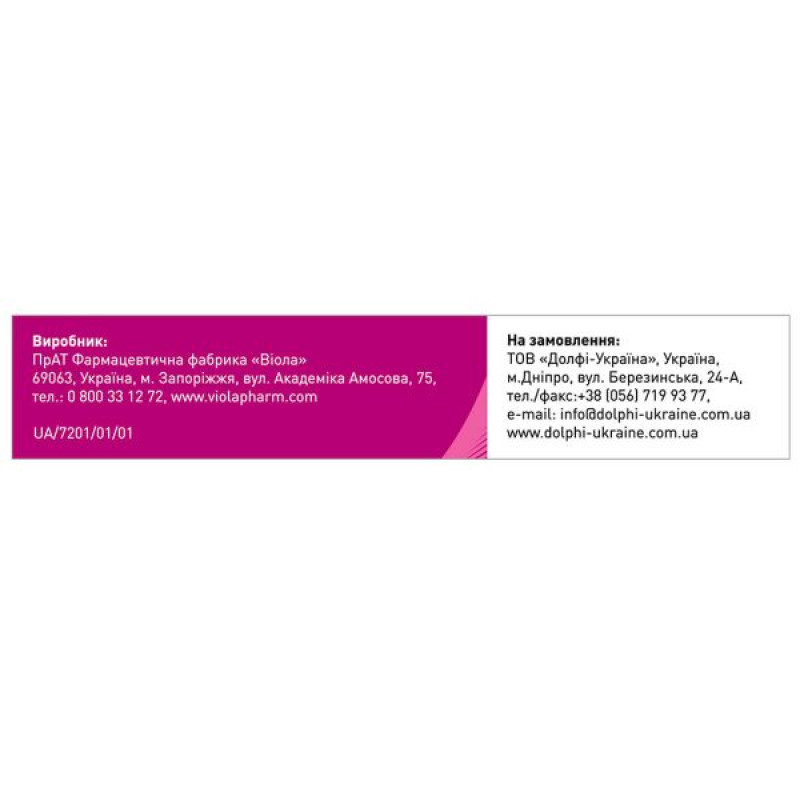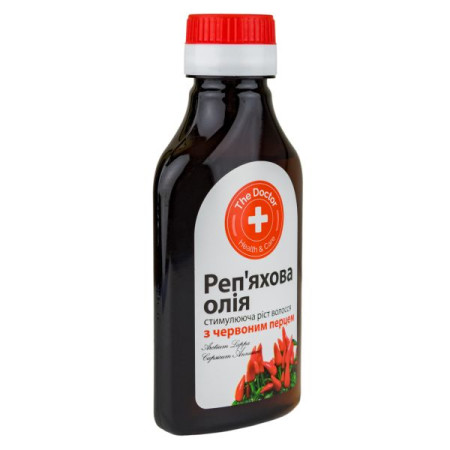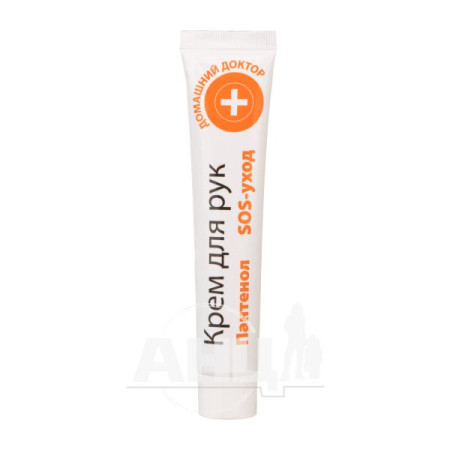Troxevenol gel Expert Pharma tube 40 g

Instructions for Troxevenol gel Expert Pharma tube 40 g
Composition
active ingredients: troxerutin, indomethacin;
1 g of gel contains 20 mg (0.02 g) troxerutin, 30 mg (0.03 g) indomethacin;
excipients: propylene glycol, ethanol 96%, macrogol 400, carbomer 934, methyl parahydroxybenzoate (E 218).
Dosage form
Gel.
Main physicochemical properties: homogeneous, yellow, transparent or slightly opalescent gel.
Pharmacotherapeutic group
Capillary stabilizing agents. Troxerutin, combinations. ATX code C05C A54.
Pharmacological properties
Pharmacodynamics.
Troxevenol is a combined drug for topical use. Indomethacin has a pronounced anti-inflammatory, analgesic and anti-edematous effect due to the inhibition of prostaglandin synthesis by reverse blockade of the COX enzyme, prevents platelet aggregation. When applied topically, it reduces pain, swelling and shortens the period of functional rehabilitation in cases of musculoskeletal injuries. Indomethacin exhibits more pronounced anti-inflammatory activity compared to salicylates and phenylbutazone.
Troxerutin belongs to bioflavonoids and is a mixture of hydroxyethyl derivatives of rutoside, in which trihydroxyethylrutoside predominates. It exhibits angioprotective activity, reduces capillary permeability and has a venotonic effect. It eliminates the vasodilatory effect of histamine, bradykinin and acetylcholine, exhibits antiaggregatory and anti-inflammatory effects on paravenous tissues, increases capillary resistance. It reduces tissue edema, improves their trophism in pathological changes associated with venous insufficiency.
Pharmacokinetics.
The gel base of the drug ensures complete solubility of the active components and their penetration into inflamed tissues and synovial fluid. Indomethacin binds to blood plasma proteins by more than 90% and is biotransformed in the liver by O-demethylation and N-deacetylation with the formation of inactive compounds. Indomethacin is excreted in urine (60%), bile and feces (30%). Penetrates into breast milk.
Most of the absorbed tri-, di- and polyhydroxyethylrutosides are excreted in the bile, a much smaller part in the urine. Tetrahydroxyethylrutoside is excreted mainly in the urine.
Indication
Symptomatic treatment of venous insufficiency, varicose veins, superficial thrombophlebitis, phlebitis, post-phlebitis condition; in the complex therapy of hemorrhoids; soft tissue rheumatism - tendovaginitis, bursitis, fibrositis, periarthritis; edema after surgical interventions; bruises, dislocations, sprains.
Contraindication
Hypersensitivity to any component of the drug or to nonsteroidal anti-inflammatory drugs. The drug is contraindicated in patients with bronchial asthma.
Interaction with other medicinal products and other types of interactions
The drug should not be used simultaneously with other nonsteroidal anti-inflammatory drugs (potentiation of the effect) and corticosteroids (possibility of ulcerogenic effect).
Application features
The gel is intended for external use only.
Troxevenol should only be applied to intact skin. Avoid contact of the gel with mucous membranes, open wound surfaces and eyes.
If the duration of treatment is more than 10 days, it is necessary to determine the leukocyte formula and platelet count.
Do not exceed the recommended dose.
Like other drugs containing nonsteroidal anti-inflammatory drugs, the drug should be used with extreme caution in patients with allergic diseases and reactions, in cases of impaired liver and kidney function, when applied to large areas of skin, and in the presence of a stomach ulcer.
Use during pregnancy or breastfeeding
There is no clinical experience confirming the safety of the drug during pregnancy, therefore the drug should be prescribed only if the expected therapeutic effect for the mother outweighs the potential risk to the fetus. Due to the fact that indomethacin passes into breast milk, the use of the drug during breastfeeding is not recommended.
Ability to influence reaction speed when driving vehicles or other mechanisms
Does not affect.
Method of administration and doses
Externally. Apply a 4-5 cm long gel column in a thin layer to the affected areas and rub in lightly 3-4 times a day. The total daily dose should not exceed 20 cm of gel. Duration of treatment is no more than 10 days.
Children.
The drug is not recommended for use in children under 14 years of age, given the lack of sufficient clinical experience.
Overdose
With local application of the drug, overdose has not been observed, however, with prolonged treatment (more than 10 days), monitoring is necessary to detect possible systemic effects - hepatotoxicity, severe headache, hemorrhages, as well as laboratory blood tests (monitoring of the leukocyte formula and platelet count). In case of accidental ingestion of the drug, burning sensations in the oral cavity, salivation, nausea, vomiting are possible. In this case, rinsing the oral cavity and stomach is indicated, and if necessary, symptomatic treatment. In case of contact with the eyes, mucous membranes and open wounds, local irritation is observed - lacrimation, hyperemia, burning, pain. Wash off the gel with a large amount of distilled water or 0.9% sodium chloride solution until the symptoms disappear completely or significantly decrease in severity.
Adverse reactions
Local reactions: possible symptoms of hypersensitivity on the skin - contact dermatitis, itching, redness, rash, feeling of warmth and burning in the area of application.
Systemic reactions: very rarely, with long-term use on large areas of the body, side effects may occur:
from the digestive tract - nausea, vomiting, stomach pain, increased levels of liver enzymes;
from the immune system - symptoms of hypersensitivity (anaphylaxis, bronchial asthma attack, angioedema).
The product contains propylene glycol, which may cause skin irritation, and methyl parahydroxybenzoate, which may cause allergic reactions.
If any adverse reactions occur, you should stop using the drug and be sure to consult a doctor.
Expiration date
2 years.
Storage conditions
Store in the original packaging at a temperature not exceeding 25 °C; do not freeze. Keep out of the reach of children.
Packaging
40 g in tubes. 1 tube in a pack or without a pack.
Vacation category
Without a prescription.
Producer
PrJSC Pharmaceutical Factory "Viola".
Location of the manufacturer and its business address.
69063, Ukraine, Zaporizhia, Akademika Amosova St., 75.
Applicant: PrJSC Pharmaceutical Factory "Viola".
Location of the applicant.
69063, Ukraine, Zaporizhia, Akademika Amosova St., 75.
There are no reviews for this product.
There are no reviews for this product, be the first to leave your review.
No questions about this product, be the first and ask your question.








